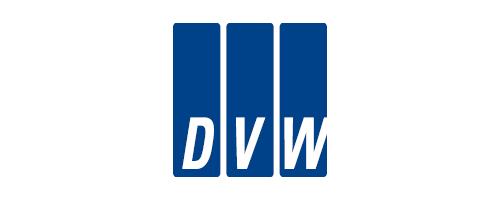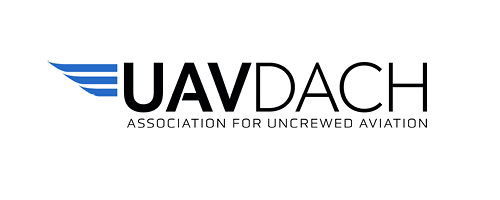
INTERGEO 2023, the world's largest trade fair for geodesy, geoinformation and land management, will present a new thematic area "Unmanned Systems" this year. The area will focus on the latest developments and applications of unmanned systems in the fields of air, water and ground.
The area will include a dedicated exhibition area with related offerings, a conference area with presentations on workflows, mission areas and added value of the missions, as well as practical demonstration of the missions and opportunities.
The market for unmanned systems has grown rapidly in recent years and offers great potential for new applications. Unmanned systems can be used in many different areas, such as agriculture, construction, infrastructure, logistics, disaster response, and security.
Geospatial information is critical for unmanned systems (UAS) because it allows them to navigate, control, and sense their environment. Geospatial information can be provided in the form of maps, aerial imagery, satellite imagery, and other data. This data can be used by UAS to determine their position, avoid obstacles, locate objects and plan missions.
INTERGEO 2023 offers a unique platform for companies, academia and decision-makers to learn about and network on the latest developments and applications of unmanned systems.
Categorization of civil unmanned systems by area of application.
Air/ Aerial : Drones, UAV, UAS, RPAS
Land / Terrestrial: Ground Vehicles, Unmanned Ground Vehicle (UGV), Robotics
Water / Marine/ Maritime: Marine Vehicles, Unmanned Surface Vehicle (USV), Autonomous
Underwater Vehicle (AUV), Remotely Operated Vehicle (ROV; connected to a ship by cable);
Uncrewed Marine Vehicles, Unmanned Underwater Vehicles (UUV), Unmanned Sea Systems.
Drones are the most common type of UAV and are used for a variety of applications, including infrastructure inspection, event monitoring, and cargo delivery.
Ground vehicles can be used for a variety of tasks, such as inspecting construction sites, delivering goods, and clearing mines.
Watercraft can be used for a variety of tasks, such as inspecting waters, monitoring coastlines, and searching for missing persons.
The advantages of unmanned systems
Unmanned systems are already being used in a variety of fields, and their use will continue to increase in the coming years.
Unmanned systems offer a number of advantages over manned systems, such as:
- They can be used in hazardous or hard-to-reach environments.
- They can be used for tasks that are too tedious or strenuous for humans.
- They can collect data that is difficult or impossible for humans to collect.
- They can transmit and process data in real time.
You will find the Unmanned Systems/ Maritime Solutions area at INTERGEO 2023 in Berlin in Halle 3.2.
Unmanned Systems Conference
As part of the new themed area, we offer you an In-Conference area.
This new format of an in-CONFERENCE is designed together with the competence partners DVW e.V. - Society for Geodesy, Geoinformation and Land Management, DGPF - German Society for Photogrammetry, Remote Sensing and Geoinformation e.V. and UAV DACH e.V..
Book your Unmanned Systems Conference Ticket now and become one of 180 participants!
This ticket gives exclusive access to the UNMANNED SYSTEMS CONFERENCE - Hall 26 on Tuesday and on Wednesday until 2 pm as well as to all other EXPO STAGES and to the EXPO on all days of the event.
| Dienstag 10.10.2023 | |||
|---|---|---|---|
| 14:00 - 15:30 | UAV photogrammetry workflow – revisited [Chair: Thomas Luhmann, Jade Hochschule Oldenburg] | EN | |
| Michael Cramer (Uni Stuttgart): Georeferencing – just push the button? Heinz-Jürgen Przybilla (ehem. Hochschule Bochum): UAV sensors and their calibration Norbert Haala (Uni Stuttgart): More than just XYZ – on the automatic interpretation of 3D point clouds Martin Kada (TU Berlin): From points to 3D models – a (short) story of man, machine, and A.I. |
|||
| 15:30 - 16:00 | Pause | ||
| 16:00 - 17:30 | Rechtliche Grundlagen zur geplanten Neufassung des § 21 k | DE/EN | |
|
Dr. Oliver Heinrich (Rechtsanwalt):Planung und Beantragung Rene Wagner: Vermessungsflüge mit Aussicht auf SORA 2.5 |
|||
| Ab 17:30 | Networking mit Getränken und Fingerfood | ||
| Mittwoch 11.10.2023 | |||
| 09:30 - 11:00 | UAV applications in public sector [Chair: Till Sieberth, Jade Hochschule Oldenburg] | ||
|
Markus Gerke (TU Braunschweig): Bridge inspection using UAV and comparison to conventional technologies Maria Chizhova (Universität Bamberg): UAV-applications for documentation and preservation of cultural heritage objects Thomas Kersten (HCU Hamburg): UAV-Photogrammetrie – schon reif für die Katastervermessung? Markus Rembold (Katasterbehörde Ennepe-Ruhr-Kreis): Rechtliche Aspekte beim UAV-Betrieb einer Katasterbehörde |
EN EN DE DE |
||
| 11:00 - 11:30 | Pause | ||
| 11:30 - 12:15 | Use cases / Applications and Innovations [Chair: Michael Wieland, UAV DACH] | EN | |
|
Anette Eltner & Melanie Elias (TU Dresden): Multi-modal UAV data for environmental monitoring Georg Bareth (Uni Köln): Multispektralsystem für Agraranwendungen Offen: Anwendungs-Cases aus der Sensorik und/oder Sensorik und Flugsystem (á 10min) |
|||
| 12:30 - 13:00 | Pause | ||
| 13:00 - 14:00 | What's next - Ausblick in die Zukunft [Chair: Michael Wieland, UAV DACH] | EN | |
|
Lasse Klingbeil (Uni Bonn): Towards autonomously flying robot swarms? New concepts for navigation and mapping Florian-Michael Adolf (Volocopter GmbH): Autonomie Zusammenfassung und Ausblick auf 2024 |
|||
Competence Partner
Die INTERGEO 2023 bietet eine einzigartige Plattform für Unternehmen, Wissenschaft und Entscheidungsträger, um sich über die neuesten Entwicklungen und Anwendungen unbemannter Systeme zu informieren und zu vernetzen.
Kategorisierung ziviler, unbemannten Systeme nach Einsatzbereich
Air/ Aerial : Drones, UAV, UAS, RPAS
Land / Terrestrial: Ground Vehicles, Unmanned Ground Vehicle (UGV), Robotics
Water / Marine/ Maritime: Marine Vehicles, Unmanned Surface Vehicle (USV), Autonomous
Underwater Vehicle (AUV), Remotely Operated Vehicle (ROV; connected to a ship by cable);
Uncrewed Marine Vehicles, Unmanned Underwater Vehicles (UUV), Unmanned Sea Systems
Drohnen sind die am weitesten verbreitete Art von UAV und werden für eine Vielzahl von Anwendungen eingesetzt, wie z. B. für die Inspektion von Infrastrukturen, die Überwachung von Ereignissen und die Lieferung von Gütern.
Bodenfahrzeuge können für eine Vielzahl von Aufgaben eingesetzt werden, wie z. B. für die Inspektion von Baustellen, die Lieferung von Gütern und die Minenräumung.
Wasserfahrzeuge können für eine Vielzahl von Aufgaben eingesetzt werden, wie z. B. für die Inspektion von Gewässern, die Überwachung von Küsten und die Suche nach vermissten Personen.
Die Vorteile unbemannter Systeme
Unbemannte Systeme werden bereits in einer Vielzahl von Bereichen eingesetzt, und ihre Nutzung wird in den kommenden Jahren weiter zunehmen.
Unbemannte Systeme bieten eine Reihe von Vorteilen gegenüber bemannten Systemen, wie z. B.:
- Sie können in gefährlichen oder schwer zugänglichen Umgebungen eingesetzt werden.
- Sie können für Aufgaben eingesetzt werden, die für Menschen zu langwierig oder zu anstrengend sind.
- Sie können Daten sammeln, die für Menschen schwer oder unmöglich zu erfassen sind.
- Sie können in Echtzeit Daten übertragen und verarbeiten.
Den Bereich Unmanned Systemens/ Maritime Solutions finden Sie auf der INTERGEO 2023 in Berlin in Halle 3.2.
Discover the other exciting subject areas of INTERGEO 2023 in Berlin:
Click here for information on the "Earth Observation" area
Click here for information on the "BIM AREA" area


